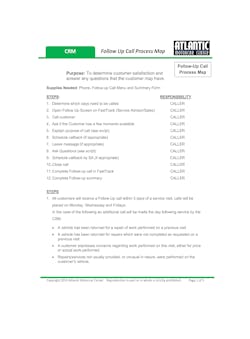Howes: Changing Your "Job" Into A Business
After selling my business in Buffalo in 2000, I moved to Maine looking for another business to acquire. During the due diligence process, after doing the initial legwork, I brought numerous businesses to the attention of my accountant.
Time and time again, I vividly recall my accountant sharing a word of wisdom during the evaluation process. After reviewing the financials of the business, in which the owner usually desperately wanted to sell, she would oft repeat unto me the simple phrase, "Bruce, if you buy this company, you are buying yourself a job, not a business."
You may ask why she would share that, and I'd say good question, for I had to have her explain it to me. Basically, there seemed to be two common dominators in nearly all the businesses we looked at with the first one that stood out right away being the owner was "burned out," tired and ready to call it quits.
Though it would often be couched in a more innocuous phrase, something along the lines of "the owner has had a change in life," the bottom line was the owner was tired, frustrated, had lost his vision for the business and employee morale was at a low. The second common dominator was almost always a cash flow issue, and in nearly every case, the business had very poor cash flow, low retained earnings and unpaid vendors.
The apple doesn't fall far from the tree or as one of my old employees used to say, "The fish rots at the head." So, I began to look at these businesses closely and discovered some parallels and commonalities. Yes, the owner was burned out, and yes, the companies had low retained earnings, but why? That why was usually the reason the business was being sold; it was in trouble, and a business in trouble is sold at a distressed price.
So, let me share the secret I discovered—a secret that eludes so many small businesses in this country—and that secret is simply having what I term an "owner-centric" rather than an "independent" business. I'll explain more as we go on.
Basically, the way most businesses grow is that the owner starts it up by himself with a few key employees, and all the decisions revolve around him; he is, often with great pride the self-titled "Chief Cook and Bottle Washer." Every decision needs to be made through him, and employees usually orbit about the owner rather than having their own spheres of influence. This business can and usually does grow to a point, then stagnates and often begins a slow decline. The owner, by virtue of the business structure, must be consulted on every decision, from what floor soap to buy, to what kind of coffee to put in the customer lounge.
Consequently, the owner is busy but not effective. I should add that not all businesses necessarily enter a decline phase, some maintain stasis, but being "owner-centric," it is much subject to the owner's health and well-being. So, as the owner ages, has health issues or other distractions, the business suffers.
We've all heard the old maxim, "Work on the business, not in it." But how many people know how to apply that and apply that effectively to their current operation? Not many, which is why so many small business owners are tired, never take vacations, never produce a saleable business and sadly often end with the death of the owner, hence the "buying yourself a job" comment.
After selling my first business in Buffalo, I determined to learn a better way of managing by empowering my employees and by creating a "branch" rather than owner "orbit" type of business. One of the best tools I came across was the "Process Map," which we'll talk about in greater detail soon. I was able to implement this in our business, and after proper documentation, stress tested it numerous times. I'd like to share the power of the Process Map with my IAP friends, and I believe if you get the message, it will change your way of doing business, maybe even your life!
What Is A Process Map?
Remember Grandma's great chocolate chip cookies and how everyone wanted the recipe? Very simply, a "process map" is simply a recipe, a way to make sure the outcome, be it cookie or process, turns out the same every time.
I was first introduced to process maps about five years ago when searching for a way to scale my business and make certain that each employee understood and always acted in a way that honored our customers and our business interests.
One of the great challenges any business, from the mom-and-pop corner store to the largest manufacturing facility, faces is to make both service and product consistent, ideally consistently excellent. The traditional way, employed for hundreds of years, is to train or apprentice each employee so they know and understand the company culture.
One problem that arises when an employee departs, they take that knowledge with them. Another problem is if any employee is absent, no one else knows how to do that particular operation, or when someone invents a better way of doing things, but it never gets shared with the rest of the team.
A process map is simply a dynamic knowledge base that captures the collective knowledge, best practices and know-how that each post (job) possesses. And it is important to document each post, from the fellow cleaning the offices to the CFO entering the financials, for this allows the collective knowledge to be recorded, analyzed and improved upon.
This is yet another dimension to process maps, that is, having each and every post follow the
standard practice, assuring a consistent result. In larger firms that adhere to the ISO system of standards, Process Maps are the rule, but in smaller firms, this is not the case.
All too often, the knowledge base is concentric around the owner, and the employees are not empowered to make decisions or have all the knowledge they need to do their jobs well. While this makes the owner feel important, it creates hurdles to growth and development, meaning that the owner is often tied to their desk, and in their absence, communication, efficiency and quality often break down.
So, let's revisit Grandma's recipe and think about how we can apply that to modern business. Do we not need to collect the same information—time, who, when, what, where—in baking as we do in business? Sure, those very same assets need to be located, accounted for and used in the right order at the right time. So, this, in essence, is what a process map captures.
First, we need a "Purpose" for why we are doing this; employees need to know the "why" just as much as the "how." Next, we need to lay out what "Assets" are required— telephone, flour and sugar—so the baker, or employee, has all that they need on hand. Finally, we need a "How": How much sugar, how long to bake, whom to call, when to call, what to say. And that those three key items form a process map.
A Sample Process Map
So, let's look at some simple process maps. There is a simple "follow-up call" map, which our customer relationship manager (CRM) uses weekly on her follow-up calls to customers. She built the map herself, and I would encourage you to have each team member create their own map, then have another employee not familiar with the post test the map. It may take two or three revisions, but you'll eventually wind up with a very functional and working map.
Keep in mind that process maps are dynamic; as business interests, equipment, or processes change, the maps must be kept updated. We'll discuss further how to make this update process simple using Google Drive in the next section.
Making Process Maps Work For You
It's important to point out that a process map is going to be unique for each business; while the overall template may be similar, one cannot simply copy another business's process map and expect the same results. So there is an investment, both in time and energy, to correctly craft a functional process map.
I should also add a final detail here: the map needs to be crafted in a way that any employee, regardless of their post, can pick up the process map of another employee who might be out on leave or vacation and flow the steps exactly. This is highly critical. Write the map in a way that no doubt is left. Script words tell how to use the phone or computer, in essence, everything the employee will need to autonomously work in that post.
The Magic Of Google Drive
Google Drive is a file storage and synchronization service that enables user cloud storage, file sharing and collaborative editing. Google Drive really shines when it comes to process maps. With the sharing feature, you can choose who has access to a document, which makes it perfect for the process map model. You can keep one version of each process map on the drive, set up individual folders with different rights for different users, and have a complete, off-site, backed operations manual. Here is the cool thing, can be accessed from anywhere, and the content can be dynamically changed without reprinting an entire manual!
Putting It All Together
Technology, it's a beautiful thing (at least it is when put together to serve you, not you serve technology). The process is simple:
- Build your process maps
- Get team buy-in
- Document each post
- Put the maps on Google Drive
- If needed, you can even schedule each post on Google Calendar.
Please take a look at our example below, it may clear up the system. I'm happy to answer any questions you might have about this, or explain the process should you have a question. Please call or email me directly; it would be my pleasure to assist.

